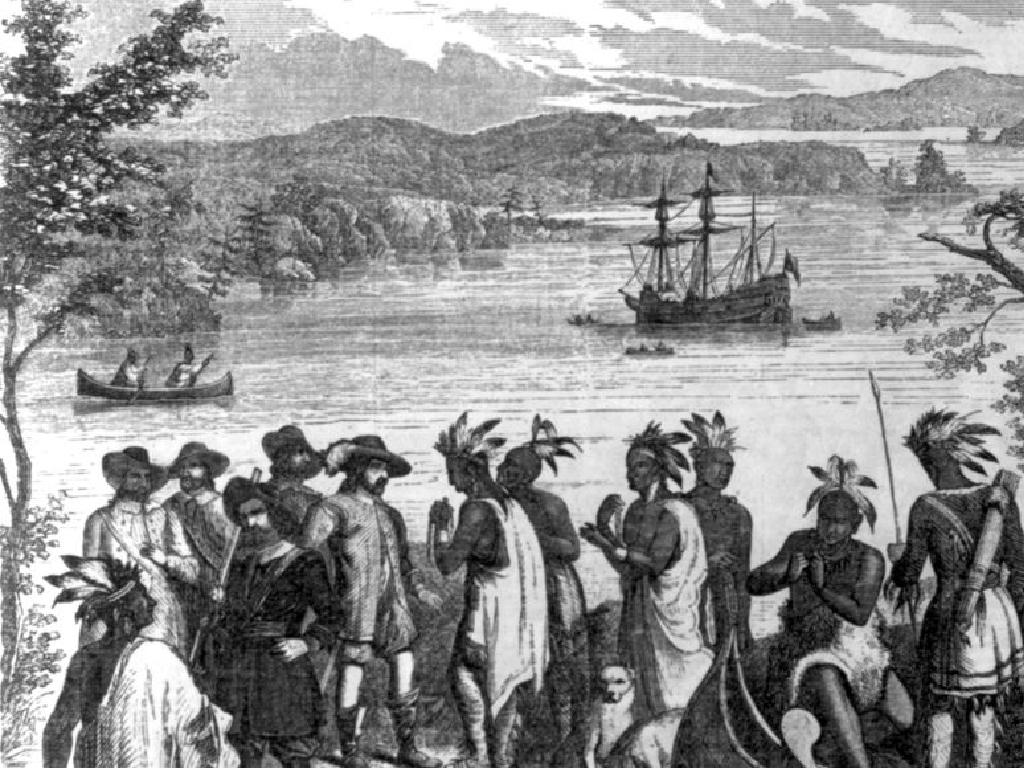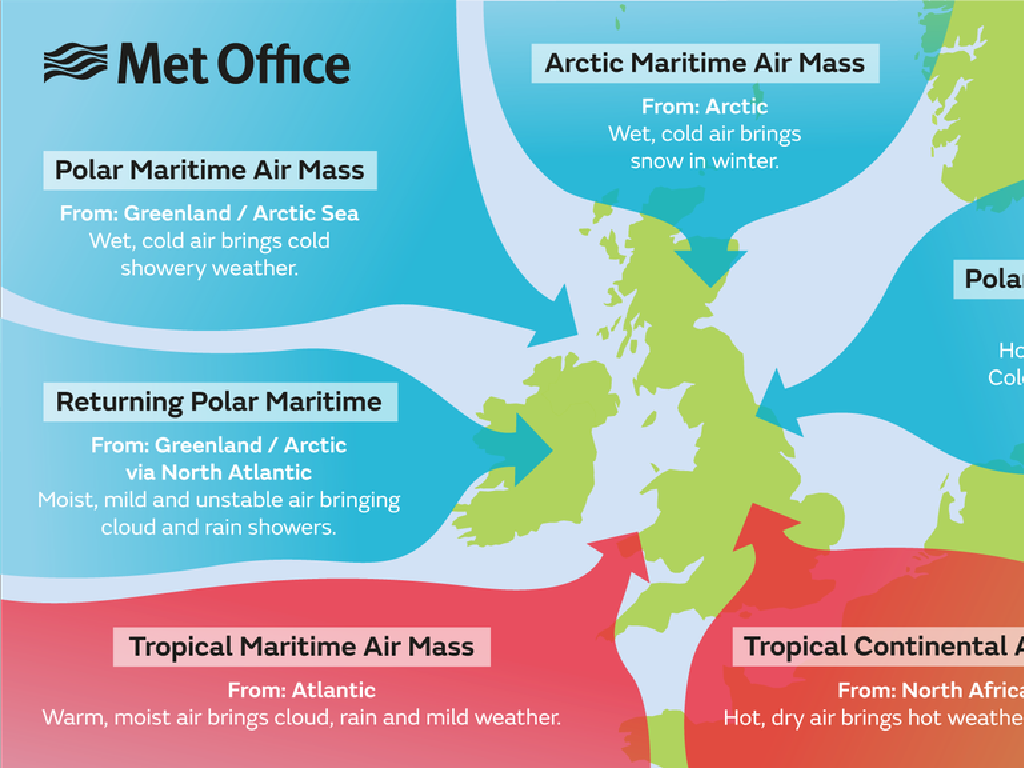Animal Adaptations: Feet And Limbs
Subject: Science
Grade: Fifth grade
Topic: Adaptations
Please LOG IN to download the presentation. Access is available to registered users only.
View More Content
Animal Adaptations: Feet and Limbs
– What are adaptations?
– Adaptations are traits that help animals survive in their environments.
– Importance of feet & limbs
– Feet and limbs help animals move, hunt, and escape predators.
– Types of feet & limbs
– Webbed feet, claws, hooves, and wings are examples of limb adaptations.
– Functions of adaptations
– Each adaptation has a special function, like swimming or grasping.
|
This slide introduces the concept of animal adaptations, focusing on the role of feet and limbs in survival. Adaptations are physical or behavioral characteristics that have developed to allow an organism to better survive in its environment. Discuss the various types of feet and limbs that animals have evolved, such as webbed feet for swimming, claws for climbing, hooves for running, and wings for flying. Explain how these adaptations help animals find food, protect themselves, and move within their habitats. Encourage students to think about how different adaptations are suited to particular environments and tasks.
Exploring Animal Adaptations: Feet and Limbs
– What are adaptations?
– Adaptations are traits helping survival
– Examples of limb adaptations
– Ducks have webbed feet for swimming, monkeys have grippy toes for climbing
– Adaptations’ role in survival
– Traits like strong legs help escape predators
– Adaptations suit habitats
– Polar bear paws are wide for snowy terrain
|
This slide introduces the concept of adaptations, specifically focusing on the feet and limbs of animals. Adaptations are specialized features that have evolved over time to help an organism survive in its environment. Provide examples of how certain adaptations in feet and limbs help animals thrive, such as webbed feet in aquatic animals for swimming or sharp claws in birds of prey for catching food. Discuss how these adaptations are crucial for the survival of species, aiding in hunting, escaping predators, or navigating their habitat. Encourage students to think of more examples and consider how different environments influence the development of unique adaptations.
Animal Adaptations: Feet and Limbs
– Diversity of animal feet
– Webbed for swimming, clawed for climbing, hoofed for running
– Variety in limb functions
– Wings for flying, fins for swimming, arms for grasping
– Adaptations to habitats
– Each type thrives in particular environments
– Task-specific limb features
– Features like claws, flippers, or pads aid in survival
|
This slide introduces students to the concept of animal adaptations, specifically focusing on the diversity of feet and limbs. Explain that different types of feet, such as webbed, clawed, or hoofed, help animals survive in their specific habitats by allowing them to swim, climb, or run efficiently. Similarly, limbs like wings, fins, arms, and legs serve various functions like flying, swimming, or manipulating objects. Emphasize how these adaptations are perfect for the tasks and habitats each animal encounters. Use examples like ducks with webbed feet for swimming, monkeys with strong arms for climbing, or cheetahs with hoofed feet for fast running. Encourage students to think of other animals and how their feet and limbs help them survive.
Adaptations for Movement: Feet and Limbs
– Adaptations for different movements
– Animals have special features like webbed feet or wing shape to help them move.
– Cheetah’s speed vs. Elephant’s strength
– Compare how a cheetah’s legs are built for speed, while an elephant’s legs support immense weight.
– Bird wings for flying
– Wings are shaped to catch air and lift birds into the sky.
– Fish fins for swimming
– Fins help fish to steer and balance in the water.
|
This slide introduces students to the concept of physical adaptations in animals, specifically focusing on feet and limbs. Explain how different animals have body parts that help them survive in their environments. For example, a cheetah’s long, muscular legs allow it to run at incredible speeds to catch prey, while an elephant’s thick, sturdy legs support its heavy body and enable it to walk long distances. Bird wings and fish fins are also specialized for their environments; wings are adapted for flight with feathers that catch the air, while fins are shaped to move efficiently through water. Encourage students to think about other animals and how their limbs help them move in unique ways.
Adaptations for Survival: Feet and Limbs
– Feet & limbs for hunting food
– Eagles have sharp talons to grasp prey, frogs have webbed feet to swim after food
– Defense with feet & limbs
– Porcupines use quills on their back legs for protection, kangaroos kick to defend
– Climbing adaptations
– Monkeys have long, strong arms to swing between trees, koalas have curved claws for climbing
– Digging adaptations
– Moles have large paws for digging, rabbits kick dirt out with hind legs
|
This slide explores the various ways animals have adapted their feet and limbs for survival. Students should understand that adaptations are changes that help an organism survive in its environment. For example, eagles and frogs have developed specialized feet to catch their prey. Defense mechanisms can include physical adaptations like porcupines’ quills or behavioral adaptations like kangaroos’ powerful kicks. Climbing and digging adaptations allow animals like monkeys and moles to live in specific environments such as trees or underground. Encourage students to think of other animals and how their limbs help them survive. This will help them appreciate the diversity of life and the concept of natural selection.
Case Study: The Polar Bear Adaptations
– Polar bear paws: ice walking & swimming
– Wide, large paws with grippy pads prevent slipping on ice and act like paddles in water.
– Thick fur and fat for warmth
– A layer of blubber and dense fur keep the polar bear insulated in freezing temperatures.
– Large size aids in hunting
– Being big helps polar bears to overpower prey and dominate their habitat.
– Strength: key to survival
– Muscle strength is crucial for catching prey and traveling long distances.
|
This slide focuses on the physical adaptations of the polar bear that enable it to survive in its harsh Arctic environment. Discuss how the unique design of polar bear paws allows them to traverse slippery ice and swim efficiently. Highlight the importance of their thick fur and fat layer for insulation against the cold. Explain how their large size is an advantage for hunting and fending off competitors. Emphasize the role of strength in their daily survival, from hunting seals to long-distance swimming. Encourage students to think about how each adaptation is specifically suited to the polar bear’s needs in its environment.
Interactive Activity: Match the Limb!
– Match animals to their limbs
– Discuss limb adaptation benefits
– Why are webbed feet good for ducks? Discuss!
– Group discussion on learnings
– Share what adaptations surprised you the most
– Reflect on adaptation importance
– How do adaptations help survival?
|
This interactive classroom activity is designed to engage students in learning about animal adaptations, specifically feet and limbs. Provide a variety of animal pictures and separate limb images. Students will work in groups to match each animal with the correct limb and discuss the advantages these adaptations provide for the animal’s survival and lifestyle. After the matching activity, facilitate a group discussion to reflect on the activity and what they’ve learned about how different limbs help animals thrive in their environments. Encourage students to think about the relationship between the animal’s habitat and its physical adaptations. This will help solidify their understanding of the concept of adaptation in the animal kingdom.
Conclusion: Feet & Limb Adaptations
– Recap of limb types
– We explored various feet & limbs: webbed, clawed, padded, etc.
– Importance of adaptations
– Adaptations help animals survive in their habitats
– Homework assignment
– Choose an animal and describe its limb adaptations for homework
|
As we conclude our lesson on animal adaptations, specifically focusing on feet and limbs, it’s important to review the different types we’ve learned about. Discuss how these adaptations, such as webbed feet for swimming or padded paws for silent hunting, are crucial for an animal’s survival in its specific environment. For homework, students should find an animal and write a short description of how its feet or limbs are adapted to its environment. This will reinforce their understanding of the concept of adaptation and its significance in the animal kingdom.
Class Activity: Design an Adaptive Creature
– Craft an animal with unique limbs
– Explain survival adaptations
– How do the limbs help in its environment?
– Present your creature to the class
– Discuss adaptations with peers
– Compare with real animals’ adaptations
|
In this hands-on activity, students will use their creativity to design a creature with specialized feet and limbs that help it survive in a particular environment. Provide a variety of craft materials and encourage students to think about different habitats where animals live. They should consider how adaptations like webbed feet, sharp claws, or long legs help animals find food, escape predators, or move in their environment. After crafting, each student will explain their creature’s adaptations and how they aid survival. This activity fosters understanding of the relationship between an animal’s physical characteristics and its habitat while allowing students to learn from each other’s designs. Possible variations include aquatic creatures with fins, tree-dwelling creatures with gripping toes, or burrowing creatures with digging claws.





